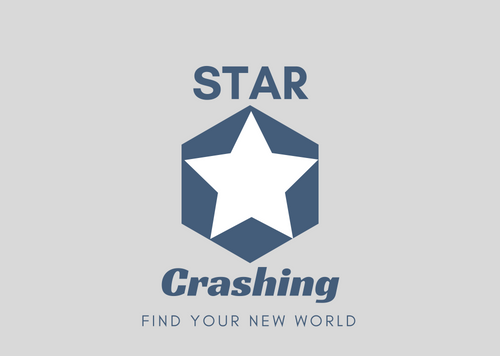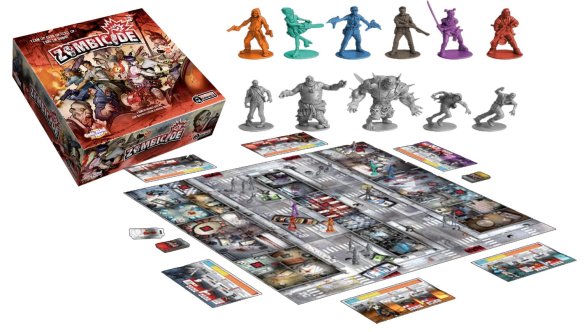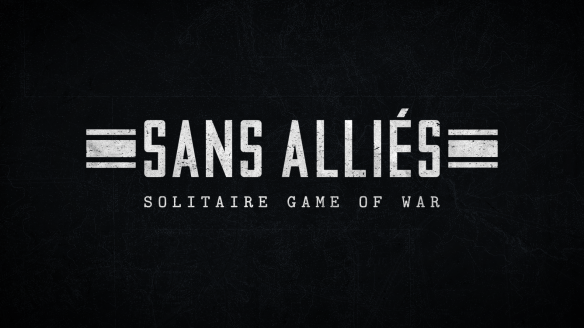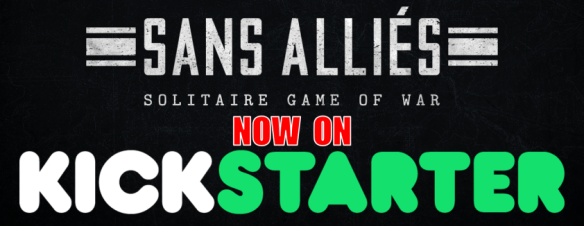
This article is about a topic that is not really related to what I normally post on this blog, but over the past few weeks it’s become something I am passionate about and want to voice my opinion on. As I’m sure you’re all aware, a little over a month ago one of the most anticipated and exciting apps hit the streets. Pokémon Go took the entire world by storm, crushing the previous record for downloaded apps and creating a phenomenon previously unprecedented in the gaming community.
With the fervor of the new game also came a significant amount of criticism, some of it warranted and some of it not, based on a number of real world events and outcomes directly associated with the app. A few people acted irresponsibly and put Pokémon Go users in a bad light, but a vast majority of the people playing the game do so in a safe,  positive, and fun way. As a Pokémon Go player myself, I’ve seen countless media outlets bashing a game they do not understand and have not played, and so I have decided to write my own defense of the app to explain why it is a benefit to our society and not a burden.
positive, and fun way. As a Pokémon Go player myself, I’ve seen countless media outlets bashing a game they do not understand and have not played, and so I have decided to write my own defense of the app to explain why it is a benefit to our society and not a burden.
A few notes before I get started: I am writing this a month after Pokemon Go’s release for two reasons. First, I did not want the article to get swept up in the hype of the game. Second, the game still had some glitches to sort out (and it still does) so I wanted to wait and let the major bugs and issues get fixed before commenting. Also I want to note that I am not trying to promote the reckless use of this game- it can be used improperly, and I want to stress that you should use it in a safe and respectful way at all times. Now then, let’s get down to it!
1) Safe to play (if used correctly) – A lot of the concern initially about Pokémon Go was the  idea of safety. People argued that the game would promote actions such as running into traffic, using your phone while driving, and overall ignorance of a player’s surroundings
idea of safety. People argued that the game would promote actions such as running into traffic, using your phone while driving, and overall ignorance of a player’s surroundings
while they stare down at their phone screen. While there have been some people who have certainly taken on this style of play, I would argue that the people using Pokémon Go in this way are people who would be doing it regardless. In addition, the game itself lends very easily to safety and awareness: you are constantly reminded to be watchful of your surroundings, and you don’t have to look at your screen constantly when playing so it is very easy to look up and be aware at all times when you play. As I said earlier in this article, a few people acting irresponsibly has caused a large number of safe players to be criticized for playing, and while understanding the safety concerns of the game is important I firmly believe that Pokémon Go is as safe as any other location-based app on phones today.
2) Rewards activity and fitness- I have been working on being more active over the past
few months, and Pokémon Go has increased my desire to do so substantially. I have been running about 3-4 times a week, and every time I use my app when running to rack up distance and catch new Pokémon. I’m sure that I still would have been going on runs even without the game, but I can honestly say that it makes it more fun and helps motivate me to run farther and faster than ever. I know I’m not the only one too: I have heard plenty of stories online of people losing significant weight because of the game. Naysayers have been arguing that we shouldn’t need a video game to motivate kids to go outside, but honestly why should it matter why people are being active as long as it’s working?
3) Does not force players to go to cemeteries or historic landmarks- This is one of the aspects of the game that I felt was a flaw when it was initially launched. For those of you who haven’t played Pokémon Go, a significant portion
of playing is finding landmarks in your area that can either provide you with items or cause battles with other players at “gyms”. Most of these areas are set up in high-traffic and noticeable locations, including churches, libraries, museums, and historic landmarks. None of the stops are directly on businesses (though they can be close- more on that later), but the areas have brought about some major controversy. A number of prominent historic landmarks and locations meant for grieving, such as Arlington National Cemetery, had Pokestops assigned to them and brought players to the location for the sole purpose of playing the game. This is a distraction and an insult to those trying to mourn and it never should have been set up that way, and those players who decided to play the game without thinking of their surroundings were extremely disrespectful. That being said, I know I would never set foot in a location that I thought would be negative or difficult for peopl e, and I know that a vast majority of the players feel the same way. In addition, it is a very simple process to request a Pokestop be removed, and it takes very little time for Niantic to do so. While I agree that this should not have been a part of the game, ultimately it is something that will be fixed moving forward and will have a minimal impact on society.
e, and I know that a vast majority of the players feel the same way. In addition, it is a very simple process to request a Pokestop be removed, and it takes very little time for Niantic to do so. While I agree that this should not have been a part of the game, ultimately it is something that will be fixed moving forward and will have a minimal impact on society.
4) Promotes business and is used for marketing efforts- As mentioned previously, no Pokémon Go locations are directly on private businesses and I don’t foresee that changing in the future. That being said, there are a number of landmarks that are close enough to a shop or restaurant that they can be reached while you are there. Small businesses have taken advantage of this by creating Pokémon Go promotions in a number of ways. For example, some restaurants will give you a discount if you drop a “lure” on a Pokestop nearby, which attracts other players to the area. There are also promotions for the three different “teams” that are a part of the game. This type of advertising has only been happening at small businesses and local shops as far as I have seen, so the game is promoting mom and pop type stores rather than large chains.

Businesses aren’t the only ones benefitting from Pokémon Go- museums, libraries, and zoos all have gotten a boost in attendants since the game came out. I have a friend who works at the Mariner’s Museum in Newport News, VA and he has told me that the Museum has started promoting Pokémon Go and spending money to place lures on the Pokestops in their exhibits. This has dramatically increased their attendance, with a number of people coming to the museum due to the game and the museum’s marketing efforts. Some areas may not have had this level of enthusiasm, but a number of places are taking Pokémon Go in stride and it has done nothing but help increase popularity and participation.
5) Helps build friendship and social interaction- It’s surprising to me how many people I have met playing Pokémon Go around my neighborhood. I can’t say that I have met anyone I will be lasting friends with, but whenever I’m out and playing it’s almost a sure thing that I will meet someone else doing the same thing. The game’s gym system is set up so that you can attack opposing gyms as a group, so finding people on the same team as you builds a bond that you wouldn’t expect. You can be as social as you want while playing the game. It doesn’t force you to make friends, but it certainly encourages it. I have seen numerous stories online about people meeting through Pokémon Go and becoming good friends, and that is only going to continue as time goes on.
The bottom line with Pokémon Go is this- I recognize that it certainly has some issues, but the game provides a number of positives that shouldn’t be discounted. The people criticizing the game, while providing some valid arguments, need to understand that they are only looking at a very small part of the picture and can’t truly understand the benefits with the narrowed view of the game the media portrays. Pokémon Go will continue to improve and grow on its successes, and as the issues lessen the strengths will only grow. I for one am looking forward to being a part of that growth as I proudly use the app and live my childhood dream of being a Pokémon trainer.






 are a huge number of possibilities and directions you can take when playing a card. At first when I read my cards I assumed there was no way I would be able to use some of them, but sure enough a round came along where they were the perfect fit. In addition, the fact that the judge gets to play one of the cards is a huge positive in comparison to CAH and Apples to Apples. The judge actually gets to shape the story the way they see fit, which can very quickly add to the hilarity.
are a huge number of possibilities and directions you can take when playing a card. At first when I read my cards I assumed there was no way I would be able to use some of them, but sure enough a round came along where they were the perfect fit. In addition, the fact that the judge gets to play one of the cards is a huge positive in comparison to CAH and Apples to Apples. The judge actually gets to shape the story the way they see fit, which can very quickly add to the hilarity.


 or the first time and feeling like everybody knows what to do, and even better it doesn’t feel like the same game you’ve always played because of the new cards and style. I also appreciate that the game is a bit more highbrow in its profanity- in no way does the game avoid dirty jokes, but it does find a way to make them more intellectual. Finally, the game is a great for social events and can be played with any number of players.
or the first time and feeling like everybody knows what to do, and even better it doesn’t feel like the same game you’ve always played because of the new cards and style. I also appreciate that the game is a bit more highbrow in its profanity- in no way does the game avoid dirty jokes, but it does find a way to make them more intellectual. Finally, the game is a great for social events and can be played with any number of players.








 points, you equip weapons that you find by searching a room/area, and you have the option of trying to be sneaky or barging in guns blazing. The underlying premise is to move from different “zones” on the map and either defeat zombies, find items, or reach objective points depending on the situation at the time. All while this is happening, more zombies are arriving and looking for a way to get to you and eat your brains. There are rules for combat, item usage, and taking damage, and after each turn new challenges form that you have to overcome. Because the game is cooperative, if a character dies your team can still win; it is possible to sacrifice yourself to keep your teammates alive as they reach their mission objective.
points, you equip weapons that you find by searching a room/area, and you have the option of trying to be sneaky or barging in guns blazing. The underlying premise is to move from different “zones” on the map and either defeat zombies, find items, or reach objective points depending on the situation at the time. All while this is happening, more zombies are arriving and looking for a way to get to you and eat your brains. There are rules for combat, item usage, and taking damage, and after each turn new challenges form that you have to overcome. Because the game is cooperative, if a character dies your team can still win; it is possible to sacrifice yourself to keep your teammates alive as they reach their mission objective.


 positive, and fun way. As a Pokémon Go player myself, I’ve seen countless media outlets bashing a game they do not understand and have not played, and so I have decided to write my own defense of the app to explain why it is a benefit to our society and not a burden.
positive, and fun way. As a Pokémon Go player myself, I’ve seen countless media outlets bashing a game they do not understand and have not played, and so I have decided to write my own defense of the app to explain why it is a benefit to our society and not a burden. idea of safety. People argued that the game would promote actions such as running into traffic, using your phone while driving, and overall ignorance of a player’s surroundings
idea of safety. People argued that the game would promote actions such as running into traffic, using your phone while driving, and overall ignorance of a player’s surroundings

 e, and I know that a vast majority of the players feel the same way. In addition, it is a very simple process to request a Pokestop be removed, and it takes very little time for Niantic to do so. While I agree that this should not have been a part of the game, ultimately it is something that will be fixed moving forward and will have a minimal impact on society.
e, and I know that a vast majority of the players feel the same way. In addition, it is a very simple process to request a Pokestop be removed, and it takes very little time for Niantic to do so. While I agree that this should not have been a part of the game, ultimately it is something that will be fixed moving forward and will have a minimal impact on society.








 ge publishing company may not seem like the most effective way to get to where you want to go, but taking the game to the masses and hoping the concept draws enough support is certainly becoming more common. There have been over 9,000 board games that were created and published through a Kickstarter campaign, including significantly popular games such as
ge publishing company may not seem like the most effective way to get to where you want to go, but taking the game to the masses and hoping the concept draws enough support is certainly becoming more common. There have been over 9,000 board games that were created and published through a Kickstarter campaign, including significantly popular games such as 













 dedicate your troops to an invasion is a crucial part of the game. You gain troops each turn, but after every turn the enemy has a chance at improving their ultimate weapon, so you can’t sit around and stockpile troops for too long. Sans Allies is also similar to the game
dedicate your troops to an invasion is a crucial part of the game. You gain troops each turn, but after every turn the enemy has a chance at improving their ultimate weapon, so you can’t sit around and stockpile troops for too long. Sans Allies is also similar to the game  trying to play the game. This meant that by the time I actually started playing the Limited War version of the game, I only had to check the rules a few times for my first play through. When I upgraded to Total War for my second play-through, I felt comfortable enough with the Limited War rules that I only checked the rules for Total War additions. Ultimately I’ve played through the game four times in total, and feel like I know pretty much everything I need to play the game moving forward.
trying to play the game. This meant that by the time I actually started playing the Limited War version of the game, I only had to check the rules a few times for my first play through. When I upgraded to Total War for my second play-through, I felt comfortable enough with the Limited War rules that I only checked the rules for Total War additions. Ultimately I’ve played through the game four times in total, and feel like I know pretty much everything I need to play the game moving forward.